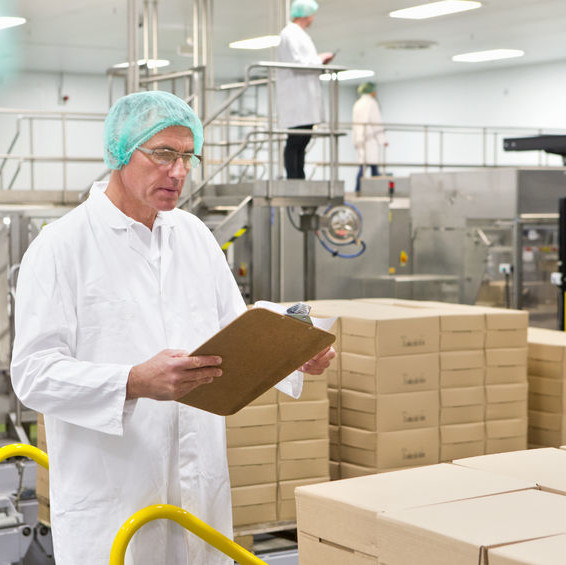
HACCP
What is HACCP?
Hazard Analysis Critical Control Point (HACCP) is the foundation of any food safety program. HACCP is a systematic approach to food safety management that aims at identifying and evaluating the food safety hazards (biological, chemical and/or physical) that are likely to occur at any stage in the food supply chain and establishes controls to prevent them from happening.1
Bakeries around the globe that implement the HACCP concept benefit from its boosting effect to the overall quality assurance strategy. Despite its not being theoretically focused on improving quality (this can be arguable in practice), this system can add a lot of value in terms of process control, especially in the baking stage, where meeting the specifications is critical to providing the desired sensory characteristics and to ensure the safety of the bread.
It is important to note that an HACCP does not address quality issues of the products. On the contrary, HACCP scientifically deals with food safety risks. Quality in products can be managed by a separate “quality assurance program” (e.g., ISO 9001).2
Origin
The HACCP concept was created in the 1960s by the Pillsbury Company working in collaboration with NASA and the US Army Research Laboratories. This concept was developed as a food safety system to comply with the strict US manned space program requirements. The objectives were to ensure the wholesomeness of foods for the astronauts to minimize the likelihood of a food poisoning outbreak in space. Back then, food safety and quality control were following a corrective “end-of-pipe” logic (end-product testing), but it was clear that a practical and preventative approach was a priority, as this would give a new level of food safety assurance.
The HACCP system remained secret for a few years, but became public in the 1970s. It was then recognized by the World Health Organization as being the most effective means to control and prevent foodborne illnesses. Food industry members started to participate in trainings and seminars and received assistance from food and public health authorities to implement the HACCP concepts.
Regulatory compliance
The HACCP concept is thoroughly addressed in 21 CFR Part 120 (Hazard Analysis and Critical Control Point [HACCP] Systems). This rule establishes the applicability (according to business nature), definitions, legal basis, and the conditions needed to properly address the principles of HACCP, e.g., training.3
Application
The HACCP makes use of multidisciplinary professional teams to ensure that decisions about food safety hazards and their control mechanisms are made by people with the right combination of knowledge, skills, and experience to collectively understand the risks to consumer health, and how these risks can be eliminated or reduced to acceptable levels.1
The HACCP in practice can be developed, implemented, and maintained by following these steps:
- Assemble the HACCP team
- Describe the product
- Identify the intended use of product
- Construct a process flow diagram
- Confirm flow diagram on site
- Conduct hazard analysis (List all potential hazards, conduct a hazard assessment, and consider control measures)
- Determine Critical Control Points (CCP)
- Establish critical limits for each CCP
- Establish a monitoring system for each CCP
- Establish corrective actions
- Establish verification procedures
- Establish documentation and recordkeeping
Steps 1 to 5 are considered preliminary; the rest are considered principles of HACCP itself.
A HACCP glossary1
Process Flow Diagram: Diagram commonly used to indicate the general flow of plant processes and equipment.
Hazard: A biological, chemical, or physical agent that is of sufficient severity, or is reasonably likely, to cause illness or injury in the absence of its control.
Hazard analysis: The written and documented process of collecting and evaluating information on hazards associated with the food under consideration to decide which are severe or sufficiently likely to occur and must be addressed in the HACCP plan or prerequisite program.
HACCP plan: The written document specific to a product and process, which identifies CCPs, establishes critical limits and controls, and documents and delineates procedures to be followed to assure control on the basis of the seven principles of HACCP.
CCP: Any point, step, or procedure at which control can be applied so that a hazard can be prevented, eliminated, or reduced to acceptable levels. CCPs can be determined by using the CCP decision tree (a sequence of questions to determine whether a particular processing step or ingredient is a CCP).
Critical limit: Maximum and/or minimum value to which a biological, chemical, or physical parameter must be controlled at a CCP to prevent, eliminate, or reduce the potential of a food safety hazard to an acceptable level.
Monitor: A planned sequence of observations or measurements to assess whether a CCP is under control and to produce an accurate record for future use in verification. This activity should not be confused with ‘verification.’
Deviation: A failure to meet a critical limit for a CCP
Corrective action: Procedure followed when a deviation occurs
Verification: The use of methods, procedures, or tests, in addition to those used in monitoring, to determine whether the HACCP system has properly implemented the prerequisite program and HACCP plan and/or whether there is a need for modification and revalidation.
Validation: The element of verification focused on collecting and evaluating scientific and technical information to determine whether the prerequisite programs and HACCP plan will effectively control the hazards.
Components of a HACCP program
- Preliminary steps
- Prerequisite programs
- Good manufacturing practices
- Written HACCP plan
References
- AIB International. “HACCP.” Food Safety and Sanitation Distance Learning Course, Chapter 21.
- Mortimore, S.E. “Introduction to HACCP.” HACCP: A Food Industry Briefing, 2nd ed., John Wiley & Sons, Ltd, 2015, pp. 1–16.
- U.S. Food and Drug Administration. “21 CFR 120 – Hazard Analysis and Critical Control Point (HACCP) Systems.” 1 Apr. 2017, https://www.accessdata.fda.gov/scripts/cdrh/cfdocs/cfcfr/CFRSearch.cfm?CFRPart=120, Accessed 09 Feb 2018

